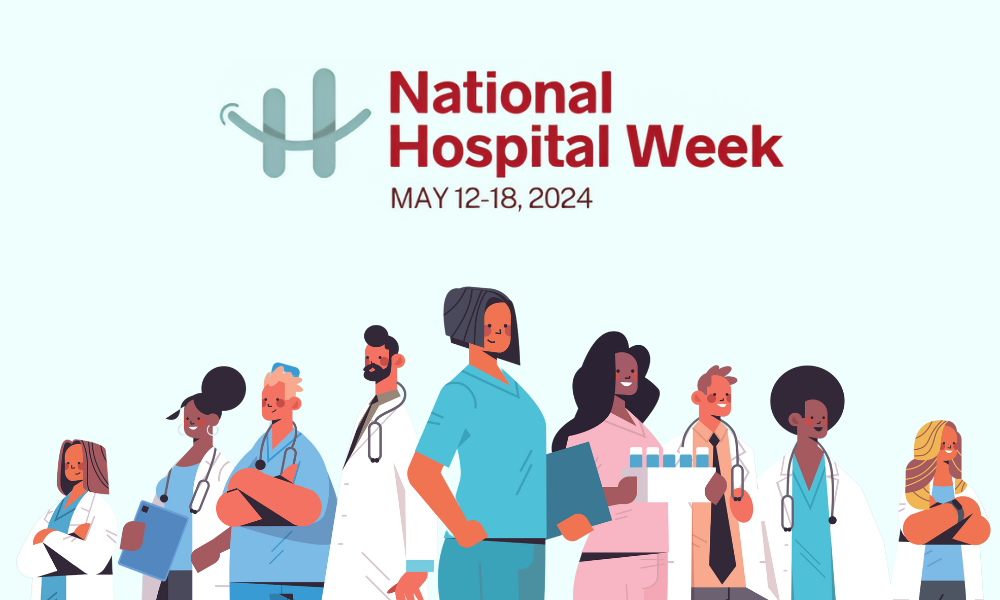Could a Locums Strategy Help Address the Talent Crisis?
(From Staffing Industry Analysts, 5/9/2023)
The COVID-19 pandemic was the catalyst for a remarkable shift in the healthcare staffing industry. There have been persistent workforce shortages over the past three years because of robust demand and a limited supply of healthcare workers.
However, even though the supply of workers has now returned to pre-pandemic levels – healthcare included – the economic growth in that time has led to more jobs than candidates looking to fill those jobs. There are 10.1 million job openings in the US, according to the recent U.S. Bureau of Labor Statistics Job Openings and Labor Turnover Summary. At the end of April, the healthcare industry added about 185,000 jobs.
SIA says the “talent shortage” has reached a full-blown “crisis,” and a significant driver has been an increase in retirements.
SIA also claims a contributing factor to the crisis was the decrease in immigration. Clients have raised pay rates for contingent workers to combat the issue, and the industry is also exploring new solutions, such as collaborating with public schools and implementing technological innovations to entice more people back into the workforce.
Healthcare clients’ openness to flexible and locum tenens work arrangements could also help the healthcare staffing industry tap into a larger labor market and meet the preferences of professionals who desire more control over their schedules. Staffing firms have also turned to creative options like direct sourcing and daily pay to land clients.
SIA says the healthcare staffing industry has tripled since 2019, reaching $64 billion in 2022. It’s the largest segment of the staffing industry, and openness to flexibility will allow clients to fill gaps in their schedules and meet the growing healthcare demand.
Staffing firms are coming to terms with the impact of the pandemic and how it is shaping the demands of full-time and temporary providers in the healthcare space. Forming partnerships and leveraging technology will be the best ways these firms can create effective strategies that address the needs of their clients.
La Vida Locum
5 Ways Locum Tenens Providers Revitalize Hospitals
(From Curative, 5/4/2023) Locum tenens providers can help hospitals address the rising patient demand despite the scarcity of physicians. The locum tenens staffing model has generated more interest in recent years from providers intrigued by the flexibility of this career path–the pay bump and work-life balance are also a bonus. Hospitals are in a great position to leverage locum tenens providers to handle their unique needs. Curative offers five benefits hospitals can reap by utilizing this job force to maintain optimal patient care and hospital performance. 1. Flexibility in Staffing Locum tenens provides flexibility in staffing by quickly filling gaps caused by employee vacations, medical leaves, or sudden increases in patient volume. Locum tenens providers can be employed for short-term assignments or long-term engagements, making them adaptable to hospitals’ specific needs. 2. Increase In Staff Satisfaction Locum tenens can enhance staff satisfaction by reducing the workload and stress on permanent staff members. It helps prevent burnout and decreased job satisfaction among permanent employees, leading to higher retention rates and a more positive work environment. 3. Cost-Effectiveness Hiring locum tenens providers can save hospitals recruitment, training, and benefits expenses. Providers can cover shifts when full-time staff members are unavailable, reducing overtime costs. Locum tenens providers are also independent contractors, relieving hospitals from the responsibility of managing their taxes, insurance, and retirement benefits. 4. Continuity of Care Locum tenens providers help maintain continuity of care, ensuring consistent and high-quality patient care during staff shortages. They can fill in gaps left by permanent providers, especially in long-term patient relationships, such as with primary care providers. 5. Access to Diverse Specialties Locum tenens physicians come from diverse medical specialties, allowing hospitals to access expertise that may not be available within their permanent staff. This is particularly beneficial for smaller or rural hospitals that struggle to recruit and retain specialists. Using locum tenens providers helps hospitals better meet the needs of their patients and address staffing challenges. If hospitals understand the advantages of hiring locum tenens, they can make more informed decisions on how to use these providers as a resource to improve hospital care and performance.Use Locum Tenens Providers to Beat the Vacation Staffing Blues
(From All Star Healthcare Solutions, 5/2/2023)
With Memorial Day weekend fully in the rear-view mirror, we are heading quickly to the start of summer. With summer comes the administrative headache for healthcare facilities as they start receiving requests for time off as providers plan their vacations. Locum tenens providers can be the remedy to help alleviate that stress headache, though.
Locum tenens providers are a flexible solution for granting staff time off during this season. However, incorporating locum tenens goes beyond allowing a few days off for providers. Temporary coverage also helps reduce burnout among providers and specialists.
Taking time off allows healthcare providers to de-stress and recharge, which leads to improved empathy, compassion, and better patient care. Locum tenens services offer healthcare facilities the opportunity to ensure physicians and advanced practitioners enjoy well-deserved vacations.
Incorporating locum tenens providers in summer scheduling helps avoid the additional strain on remaining staff while others are on vacation. It also ensures consistent operations during popular seasons when multiple staff members take time off consecutively.
Thriving in Times of Change: The Importance of Effective Healthcare Change Management
(From Maxim Healthcare Staffing , 5/25/2023)
Healthcare organizations often need change because of technological advancements or regulatory requirements. However, some organizations may be resistant to change. This is where healthcare change management is beneficial.
Change management helps minimize disruptions during significant shifts in operations, which can mean organizational, adaptive, or individual changes. Quality staff members are essential for successful change management because they help overcome resistance and promote acceptance among colleagues.
Employees who support organizational change experience benefits of increased job satisfaction, productivity, reduced stress, better communication, fewer accidents, and improved decision-making.
Several change management models can be applied in healthcare. Lewin’s Change Management Model divides the process into unfreezing, change, and refreezing stages to prepare, implement, and sustain change. The ADKAR model focuses on Awareness, Desire, Knowledge, Ability, and Reinforcement as vital elements in driving change.
Another common model is the 8 Steps for Leading Change, also known as the Kotter Method.
This model emphasizes:
- Creating a sense of urgency
- Building a guiding team
- Defining the vision
- Rallying employees
- Empowering action
- Celebrating short-term wins
- Maintaining momentum
- Ensuring the change becomes a lasting part of the organization
Effective change management in healthcare is essential for many organizations, and can significantly impact the quality of care provided. Change management ensures smooth transitions, minimizes disruption, and it helps organizations make sure they have the right people on a team to maintain the highest level of care
Locum Leaders
All Star Healthcare Solutions Named One of 2023’s ‘Best Places to Work in Healthcare’
(From PR Newswire, 5/18/2023) All Star Healthcare Solutions has been named one of the “2023 Best Places to Work in Healthcare” by Modern Healthcare. The recognition is based on positive feedback from All Star’s employees, reflecting the company’s caring culture and dedication to delivering high-quality care. The award program identifies and honors exceptional employers in the healthcare industry nationwide. Modern Healthcare will announce rankings at the “2023 Best Places to Work in Healthcare” Awards Gala. All Star recognizes the importance of taking care of its employees and helping them balance their work and personal lives because “having the right people in place is more critical than ever,” and a winning workplace understands the significance of employee well-being for overall business success. Modern Healthcare will publish a special supplement featuring the ranked list of winners in October 2023.Hire Power
Explore the Mountains and Locum Tenens Trends at NALTO’s 2023 Fall Fly-In
(From NALTO, 5/24/2023)
NALTO’s 2023 Fall Fly-In will be Sept. 26-27 in Park City, Utah, a beautiful mountain resort town located on the eastern Wasatch Mountains. Attendees can walk from the hiking trail straight to the keynote presentation led by Teri Gibson, an industry professional who oversees the marketing strategy, research, media, and email outreach for CHG Healthcare.
Gibson will present on the “State of Locum Tenens,” which will showcase insights and trends within the industry from both the provider and facility perspective.
The presentation’s data will be compiled from several quantitative and qualitative studies and association data from the Advisory Board, AAPPR, and Academy IQ. It will also include real-time results from a survey conducted in the summer of 2023.
Registration is open now for the event, and the deadline for early-bird registration is Tuesday, Aug. 1, with the deadline for room rates in Park City being Friday, Aug. 18. NALTO members are eligible for the member registration rate.
Looking To Grow A Business? Referrals May Be The Best Option
(From Butler Street)
Robert Reid, principal of Butler Street, will explore why referrals are so valuable in the company’s webinar titled “Asking For Referrals – The Most Cost-Effective Way to Acquire New Business.” This webinar is a collaboration with the National Association of Locum Tenens Organizations (NALTO).
Reid brings 13 years of staffing industry experience from business development to recruiting and key account management. During the webinar, Reid will discuss how to use referrals from clients to build trust in the marketplace.
Referrals can go a long way toward building credibility as recruiters look to land clients and build connections with potential customers. Reid will discuss some of the strategies for requesting referrals (there’s no reason it ever needs to be awkward).
Outside of what attendees get during the webinar, it will also include a hands-on breakout session with Reid where he can take questions about referrals and brainstorm some creative methods to get them. Sign up today to attend the webinar on June 15 at 2 p.m. EST.
Save the Date: Locumsmart Education Conference 2023
(From Locumsmart, 4/18/2023)
Mark your calendars for the sixth annual Locumsmart Education Conference from Dec. 4 to 7 at the Renaissance Nashville Hotel.
The conference aims to simplify the locum tenens process through intelligence, efficiency, and education. Attendees can expect to enhance their expertise in Locumsmart, receive hands-on training with the latest updates, network with peers, and learn about the current state of the locum tenens industry.
There will also be an optional AAPPR Locum Tenens Management Certificate course on Dec. 7.
The conference offers a platform for people to connect with the Locumsmart community and stay informed about the advancements in locum tenens technology. More details about the conference will be announced soon.
Making the Rounds
Overcoming Healthcare Staffing Challenges Presented by The Workplace of The Future
(From LocumTenens.com, 5/22/23)
We’ve reached an inflection point in the healthcare industry. Our communities need adequately staffed hospitals and healthcare facilities, but the healthcare industry faces unprecedented challenges in staffing these facilities.
LocumTenens.com’s report, “The Future of Work: Redefining the Role of Physicians in the Gig Economy,” delves deeper into the following challenges and addresses potential solutions.
1. Early Retirement: LT’s report says physicians are retiring younger and younger, with 11% of those clinicians not practicing under 40. 12% of those early retirees are in their 40s and 15% in their 50s, which are largely seen as the “prime earning years” for physicians.
2. Burnout: Clinicians say burnout is a significant issue, with many of the physician workforce experiencing different degrees of burnout. LT’s report says 40% of clinicians self-reported as moderately burned out, and 17% said they were “completely burned out.” While burnout has led to early retirement, it’s also led many healthcare workers to explore locum tenens opportunities because of the chance for more travel and better work-life balance.
3. The search for flexibility: Many physicians seek greater flexibility in their work. The report says 61% of physicians will likely look for new positions to give them the flexibility they crave.
The pandemic has brought about significant changes in how individuals and organizations approach work in the healthcare industry, but facilities are still facing financial strain and struggling to find staff despite increased expenditures. To address these challenges, the healthcare industry needs to embrace the workplace of the future.
Socially Speaking
From LinkedIn
From Twitter
Second Opinion
Examining Misconceptions about Corporate Giants and Primary Care Physicians
(From Advisory Board, 5/25/2023)
The New York Times recently published an article titled “Corporate Giants Buy Up Primary Care Physician Practices at Rapid Pace,” highlighting the trend of large corporations acquiring primary care physician (PCP) clinics. However, there are nuances the Times didn’t include that might help provide full context to this trend.
Advisory Board broke down what they claim are “misconceptions” about the trend of large corporations buying PCP practices.
Misconception No. 1: PCPs have a lowly status
Advisory Board says the article presents a “tone” that primary care has a “lowly status,’ and that it wouldn’t make sense for corporate owners to be eyeing such an unglamorous profession. On the contrary, corporate owners recognize the importance of PCPs and aim to transition to value-based care (VBC), which relies on primary care.
Misconception No. 2: Corporate ownership exacerbates burnout
It argues that burnout and administrative burden in medicine are systemic issues, not solely caused by increased corporate ownership. Corporate ownership models focused on VBC may alleviate some of these problems by offering resources to reduce administrative burden, implementing holistic care teams, and promising to uphold physician autonomy.
Misconception No. 3: Corporate ownership erodes doctor-patient relationships
While ownership models can potentially impact these relationships, the essential factors to consider are the tools, resources, and standards that owners integrate into all their practices that may support or erode these relationships.
Misconception No. 4: With corporate ownership comes a loss of autonomy
The reality is that employers, including corporate owners, are actively winning physician acquisition by offering various dimensions of autonomy, such as clinical, schedule, and strategic autonomy. It is essential for employers to reevaluate the autonomy they offer and have specific conversations about trade-offs.
Misconception No. 5: Ownership undermines the practices of medicine
The Times’ article challenges the assumption that ownership undermines the practices of medicine but should instead focus on what constitutes good care delivery and whether corporate ownership positively or negatively affects it.
A key takeaway is not to conflate ownership with the structural challenges in healthcare but to use this to invest in solutions that enable the best care for patients and create a supportive environment for doctors, regardless of who employs them.
Maximizing Healthcare Staff Retention through Digital Solutions
(From Health Tech Magazine, 5/19/2023)
Healthcare organizations recognize the importance of improving employee experiences to address clinician burnout and staff retention.
Many health systems are leveraging digitally enabled tools to streamline HR and IT processes. For example, Banner Health, one of the country’s largest nonprofit health systems operating in six states across the western US, implemented “ServiceNow” to enhance contract management, replacing manual processes with automated workflows. The system allows for real-time visibility into the fulfillment process, tracking contract progress, and ensuring that required forms are completed and signed.
Banner Health says it has improved onboarding for doctors and overall organizational performance, making contracting more seamless. Sanford Health, a rural healthcare system based in Sioux Falls, South Dakota., used ServiceNow to create an employee portal, addressing its HR operations’ decentralized nature.
The portal provides employees access to HR and IT services through a mobile app, offering information and support. The platform’s self-service functionality allows employees to find answers to questions, improving efficiency and reducing the time spent on routine calls and requests.
Premise Health, a healthcare system in Brentwood, Tennessee, uses ServiceNow’s IT Service Management and other platform modules to consolidate and facilitate project management. Premise improves efficiencies and end-user satisfaction by standardizing workflows and ensuring that incidents and requests reach the right people at the right time.
Healthcare organizations are using digital tools like to streamline processes, enhance their employees’ experiences, and improve patient care. By leveraging automation, real-time visibility, and self-service functionalities, these organizations aim to create a better work environment for their staff.









